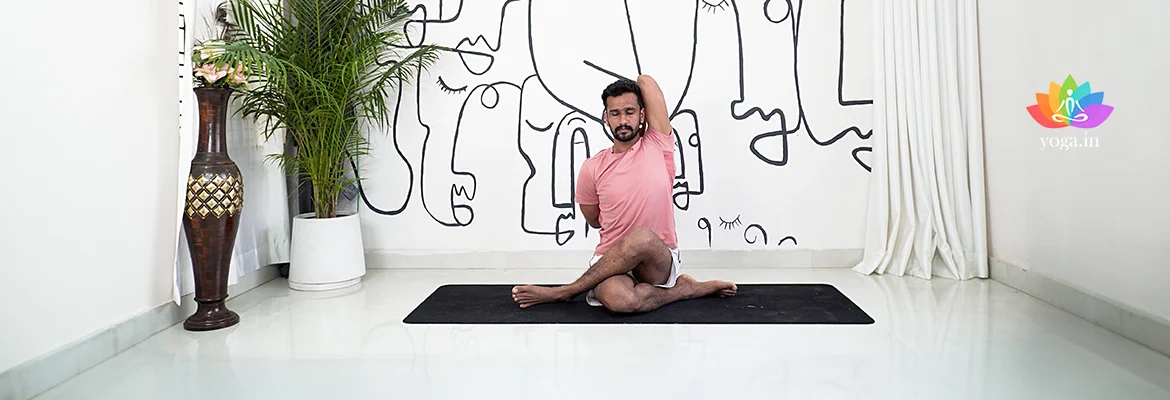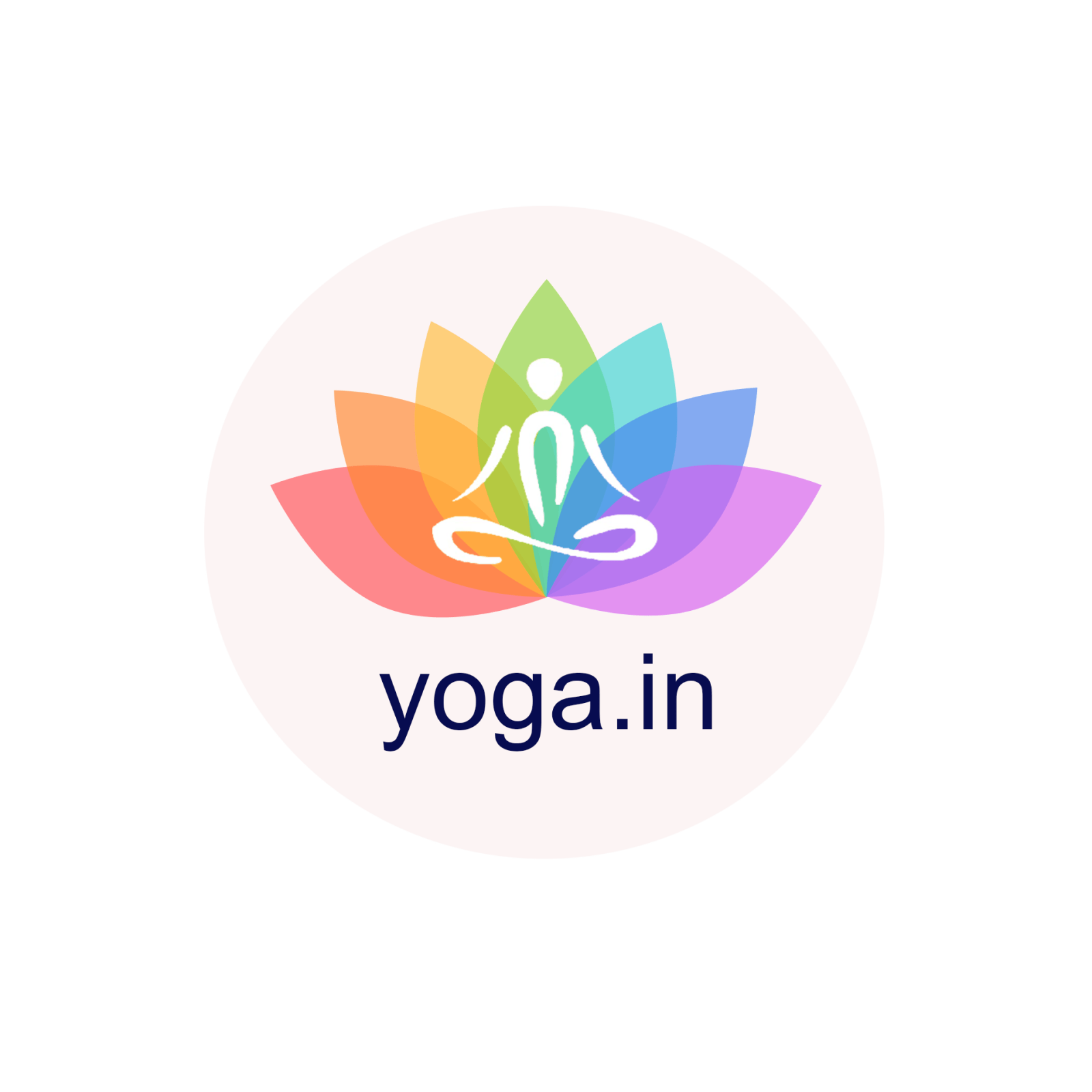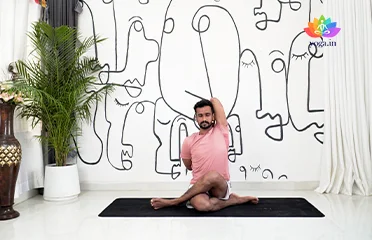Introduction to the Asana
The Sanskrit name is derived from Gau (गो) meaning cow, Mukh meaning face and asana (आसन) meaning posture or seat.
Step to get in the pose
-
-
Keep both the feet together.
-
Bend the right knee.
-
Bring your right foot to the outside of your left hip, so that your right knee is stacked on top of your left knee.
-
Keep yourself grounded to the floor through your sitting bones.
-
As you inhale, lengthen your spine and stretch your arms out to the sides, palms facing forward.
-
Internally rotate your right shoulder so that your palm faces the wall behind you. Sweep the right arm behind your back, walking your hand up between your shoulder blades, palm facing outwards.
-
Stretch the left arm up, fingertips pointing towards the ceiling, the palm of your hand still facing forward. Bend the elbow and reach down for the right fingertips, hooking the fingers together if they reach.
-
Stay in this position for a few breaths.
-
To come out of the pose, release the arms, uncross the legs and repeat on the other side.
Common mistakes and pitfalls
-
Not practicing under the guidance of an expert.
-
Overstraining your body.
-
Twisting your spine rather than keeping it aligned.
-
Twisting your elbows and shoulders to join your hands.
-
While your hands are clasped, sticking your ribs out.
Benefits
-
Strengthens the muscles of the back, hips, ankles, shoulders, thighs, inner armpits, triceps and chest.
-
Eases backache and leg cramps.
-
Cures stiffness and frozen shoulders.
-
Elongates spine and improves bad posture.
-
Treats sciatica.
-
Decongests the entire abdominal region massaging and stimulating the kidneys, liver, and pancreas.
-
Treats high blood pressure.
-
Opens your chest muscles and improves blood and oxygen circulation.
-
Improves posture.
-
Reduces anxiety and stress.
Contraindication
-
Avoid If undergone a hip replacement surgery.
-
Avoid if suffering from frozen shoulders.
-
Avoid if you have sprained your legs.
-
Avoid in case of severe pain in thighs, hip, knee, shoulder, hands and legs.
-
Avoid if there is an injury to your shoulders, muscles, ligaments, and tendons of your legs.
-
Avoid if suffering from a serious neck injury, spondylitis, severe sciatica pain, or varicose veins.
-
Avoid if suffering from piles.




